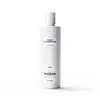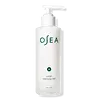What's inside
What's inside
 Key Ingredients
Key Ingredients

 Benefits
Benefits

 Concerns
Concerns

 Ingredients Side-by-side
Ingredients Side-by-side

Water
Skin ConditioningAmmonium Lauryl Sulfate
CleansingAmmonium Laureth Sulfate
CleansingPEG-120 Methyl Glucose Dioleate
EmulsifyingAmmonium Xylenesulfonate
Glycerin
HumectantButylene Glycol
HumectantHydrolyzed Wheat Protein
Skin ConditioningQuillaja Saponaria Bark Extract
CleansingSaponaria Officinalis Root Extract
Skin ConditioningYucca Schidigera Root Extract
Skin ConditioningCocamidopropyl Betaine
CleansingAscorbyl Palmitate
AntioxidantPolysorbate 20
EmulsifyingDimethyl Lauramine Oleate
Skin ConditioningPolyquaternium-10
Dimethyl Mea
BufferingCitric Acid
BufferingParfum
MaskingBenzyl Benzoate
AntimicrobialLimonene
PerfumingLauryl Alcohol
EmollientAmmonium Sulfate
Caprylyl Glycol
EmollientEthylhexylglycerin
Skin ConditioningHexylene Glycol
EmulsifyingOleic Acid
EmollientSodium Acetate
BufferingSodium Chloride
MaskingSodium Glycolate
BufferingDimethylaminopropylamine
Isopropyl Alcohol
SolventSodium Metabisulfite
AntioxidantSodium Sulfite
PreservativeDisodium EDTA
Tetrasodium EDTA
Potassium Sorbate
PreservativeSodium Benzoate
MaskingPhenoxyethanol
PreservativeBenzyl Alcohol
PerfumingWater, Ammonium Lauryl Sulfate, Ammonium Laureth Sulfate, PEG-120 Methyl Glucose Dioleate, Ammonium Xylenesulfonate, Glycerin, Butylene Glycol, Hydrolyzed Wheat Protein, Quillaja Saponaria Bark Extract, Saponaria Officinalis Root Extract, Yucca Schidigera Root Extract, Cocamidopropyl Betaine, Ascorbyl Palmitate, Polysorbate 20, Dimethyl Lauramine Oleate, Polyquaternium-10, Dimethyl Mea, Citric Acid, Parfum, Benzyl Benzoate, Limonene, Lauryl Alcohol, Ammonium Sulfate, Caprylyl Glycol, Ethylhexylglycerin, Hexylene Glycol, Oleic Acid, Sodium Acetate, Sodium Chloride, Sodium Glycolate, Dimethylaminopropylamine, Isopropyl Alcohol, Sodium Metabisulfite, Sodium Sulfite, Disodium EDTA, Tetrasodium EDTA, Potassium Sorbate, Sodium Benzoate, Phenoxyethanol, Benzyl Alcohol
Water
Skin ConditioningGlycerin
HumectantCaprylic/Capric Triglyceride
MaskingCetearyl Alcohol
EmollientCarthamus Tinctorius Seed Oil
MaskingUndaria Pinnatifida Extract
Skin ConditioningPropanediol
SolventCetearyl Olivate
Glyceryl Stearate
EmollientDecyl Glucoside
CleansingHamamelis Virginiana Water
AstringentSodium Lauroyl Oat Amino Acids
CleansingCorylus Avellana Seed Oil
EmollientAcacia Farnesiana Flower Extract
PerfumingRosa Centifolia Flower Extract
AstringentRosa Damascena Flower Extract
MaskingOryza Sativa Bran Extract
Skin ConditioningRosmarinus Officinalis Leaf Extract
AntimicrobialHelianthus Annuus Extract
EmollientTocopherol
AntioxidantBisabolol
MaskingZingiber Officinale Root Extract
MaskingChamomilla Recutita Extract
Skin ConditioningSaccharide Isomerate
HumectantSorbitan Olivate
EmulsifyingTrisodium Ethylenediamine Disuccinate
Caprylhydroxamic Acid
Sodium Lauroyl Glutamate
1,2-Hexanediol
Skin ConditioningStearic Acid
CleansingXanthan Gum
EmulsifyingSodium Citrate
BufferingCitric Acid
BufferingSodium Hydroxide
BufferingSodium Benzoate
MaskingPotassium Sorbate
PreservativeBenzoic Acid
MaskingWater, Glycerin, Caprylic/Capric Triglyceride, Cetearyl Alcohol, Carthamus Tinctorius Seed Oil, Undaria Pinnatifida Extract, Propanediol, Cetearyl Olivate, Glyceryl Stearate, Decyl Glucoside, Hamamelis Virginiana Water, Sodium Lauroyl Oat Amino Acids, Corylus Avellana Seed Oil, Acacia Farnesiana Flower Extract, Rosa Centifolia Flower Extract, Rosa Damascena Flower Extract, Oryza Sativa Bran Extract, Rosmarinus Officinalis Leaf Extract, Helianthus Annuus Extract, Tocopherol, Bisabolol, Zingiber Officinale Root Extract, Chamomilla Recutita Extract, Saccharide Isomerate, Sorbitan Olivate, Trisodium Ethylenediamine Disuccinate, Caprylhydroxamic Acid, Sodium Lauroyl Glutamate, 1,2-Hexanediol, Stearic Acid, Xanthan Gum, Sodium Citrate, Citric Acid, Sodium Hydroxide, Sodium Benzoate, Potassium Sorbate, Benzoic Acid
Ingredients Explained
These ingredients are found in both products.
Ingredients higher up in an ingredient list are typically present in a larger amount.
Citric Acid is an alpha hydroxy acid (AHA) naturally found in citrus fruits like oranges, lemons, and limes.
Like other AHAs, citric acid can exfoliate skin by breaking down the bonds that hold dead skin cells together. This helps reveal smoother and brighter skin underneath.
However, this exfoliating effect only happens at high concentrations (20%) which can be hard to find in cosmetic products.
Due to this, citric acid is usually included in small amounts as a pH adjuster. This helps keep products slightly more acidic and compatible with skin's natural pH.
In skincare formulas, citric acid can:
While it can provide some skin benefits, research shows lactic acid and glycolic acid are generally more effective and less irritating exfoliants.
Most citric acid used in skincare today is made by fermenting sugars (usually from molasses). This synthetic version is identical to the natural citrus form but easier to stabilize and use in formulations.
Read more about some other popular AHA's here:
Learn more about Citric AcidGlycerin is already naturally found in your skin. It helps moisturize and protect your skin.
A study from 2016 found glycerin to be more effective as a humectant than AHAs and hyaluronic acid.
As a humectant, it helps the skin stay hydrated by pulling moisture to your skin. The low molecular weight of glycerin allows it to pull moisture into the deeper layers of your skin.
Hydrated skin improves your skin barrier; Your skin barrier helps protect against irritants and bacteria.
Glycerin has also been found to have antimicrobial and antiviral properties. Due to these properties, glycerin is often used in wound and burn treatments.
In cosmetics, glycerin is usually derived from plants such as soybean or palm. However, it can also be sourced from animals, such as tallow or animal fat.
This ingredient is organic, colorless, odorless, and non-toxic.
Glycerin is the name for this ingredient in American English. British English uses Glycerol/Glycerine.
Learn more about GlycerinPotassium Sorbate is a preservative used to prevent yeast and mold in products. It is commonly found in both cosmetic and food products.
This ingredient comes from potassium salt derived from sorbic acid. Sorbic acid is a natural antibiotic and effective against fungus.
Both potassium sorbate and sorbic acid can be found in baked goods, cheeses, dried meats, dried fruit, ice cream, pickles, wine, yogurt, and more.
You'll often find this ingredient used with other preservatives.
Learn more about Potassium SorbateSodium Benzoate is a preservative. It's used in both cosmetic and food products to inhibit the growth of mold and bacteria. It is typically produced synthetically.
Both the US FDA and EU Health Committee have approved the use of sodium benzoate. In the US, levels of 0.1% (of the total product) are allowed.
Sodium benzoate works as a preservative by inhibiting the growth of bacteria inside of cells. It prevents the cell from fermenting a type of sugar using an enzyme called phosphofructokinase.
It is the salt of benzoic acid. Foods containing sodium benzoate include soda, salad dressings, condiments, fruit juices, wines, and snack foods.
Studies for using ascorbic acid and sodium benzoate in cosmetics are lacking, especially in skincare routines with multiple steps.
We always recommend speaking with a professional, such as a dermatologist, if you have any concerns.
Learn more about Sodium BenzoateWater. It's the most common cosmetic ingredient of all. You'll usually see it at the top of ingredient lists, meaning that it makes up the largest part of the product.
So why is it so popular? Water most often acts as a solvent - this means that it helps dissolve other ingredients into the formulation.
You'll also recognize water as that liquid we all need to stay alive. If you see this, drink a glass of water. Stay hydrated!
Learn more about Water